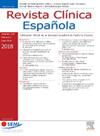Infección por Helicobacter pylori en los pacientes con enfermedad pulmonar obstructiva crónica. Revisión sistemática y metaanálisis
IF 1.7
4区 医学
Q2 MEDICINE, GENERAL & INTERNAL
引用次数: 0
Abstract
Objective
To determine the association of HP infection with COPD, assessing its prevalence and influence on symptoms, lung function, quality of life, exacerbations, hospitalizations, mortality, and healthcare costs.
Methods
We performed a systematic review and meta-analysis after conducting a systematic literature search in PubMed, Embase, Cochrane Library, Virtual Health Library, ScienceDirect, Scopus, Researchgate, and GoogleScholar, from database inception to 31/12/2022. We used the Der Simonian-Laird method to calculate pooled HP prevalence, the Mantel-Haenszel model to determine the association of HP with COPD, and the inverse variance method to compare the pulmonary function tests between infected and uninfected patients, always with a fixed-effect model.
Results
Twenty-eight studies included a total of 8,647 patients with COPD. The pooled prevalence of HP infection was 29.8% (95%CI 29.0-30.7%). The more severe stage of COPD lesser the prevalence of HP (P<.001). HP infection was associated with COPD, estimated odds ratio 1.90 (95%CI 1.71, 2.12), P<.001. The mean differences for p%FEV1, p%FVC and FEV1/FVC ratio between HP infected and uninfected patients with COPD were -13.06 (95%CI −14.54, −11.58), −3.72 (95%CI −5.64, −1.79) and −0.01 (95%CI −0.02, −0.00) respectively.
Conclusion
Our meta-analysis suggests an appreciable relationship between HP infection and COPD. Further longitudinal studies considerating confounders and investigating causality are required.
慢性阻塞性肺病患者幽门螺杆菌感染。系统审查和荟萃分析
目的确定HP感染与COPD的关系,评估其患病率及其对症状、肺功能、生活质量、病情加重、住院、死亡率和医疗费用的影响。方法系统检索PubMed、Embase、Cochrane Library、Virtual Health Library、ScienceDirect、Scopus、Researchgate和GoogleScholar自数据库建立至2022年12月31日的文献,进行系统综述和meta分析。我们使用Der Simonian-Laird方法计算HP总患病率,使用Mantel-Haenszel模型确定HP与COPD的相关性,使用反方差法比较感染和未感染患者的肺功能测试,均采用固定效应模型。结果28项研究共纳入8,647例COPD患者。HP感染的总患病率为29.8% (95%CI 29.0-30.7%)。COPD越严重,HP患病率越低(p < 0.01)。HP感染与COPD相关,估计优势比1.90 (95%CI 1.71, 2.12), p < 0.01。HP感染与未感染COPD患者的p%FEV1、p%FVC和FEV1/FVC比值的平均差异分别为-13.06 (95%CI−14.54,−11.58)、- 3.72 (95%CI−5.64,−1.79)和- 0.01 (95%CI−0.02,−0.00)。结论:我们的荟萃分析表明HP感染与COPD之间存在明显的关系。需要进一步的纵向研究,考虑混杂因素和调查因果关系。
本文章由计算机程序翻译,如有差异,请以英文原文为准。
求助全文
约1分钟内获得全文
求助全文
来源期刊

Revista clinica espanola
医学-医学:内科
CiteScore
4.40
自引率
6.90%
发文量
73
审稿时长
28 days
期刊介绍:
Revista Clínica Española published its first issue in 1940 and is the body of expression of the Spanish Society of Internal Medicine (SEMI).
The journal fully endorses the goals of updating knowledge and facilitating the acquisition of key developments in internal medicine applied to clinical practice. Revista Clínica Española is subject to a thorough double blind review of the received articles written in Spanish or English. Nine issues are published each year, including mostly originals, reviews and consensus documents.
 求助内容:
求助内容: 应助结果提醒方式:
应助结果提醒方式:


